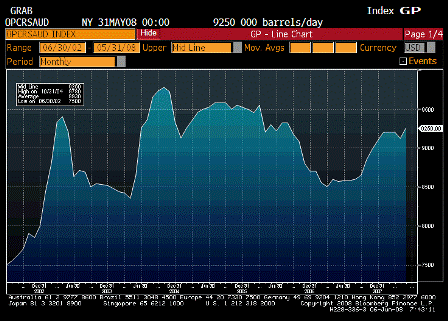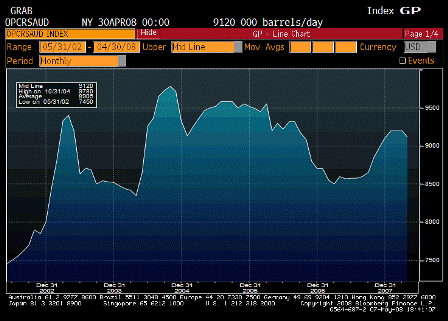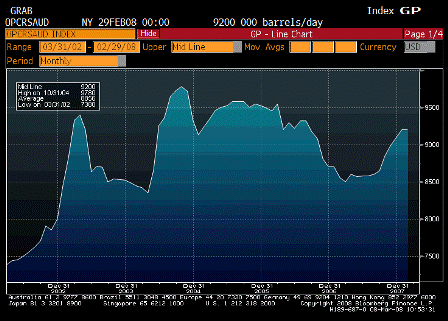Saudi Oil Production
This does not bode well for oil prices.
Increased Saudi output means demand has increased at current prices, and the Saudis (and Russians, etc.) remain firmly positioned as ‘price setter’.
The Saudis continue to have the only excess supply, with about 1.5 million bpd excess capacity.
The Mike Masters sell off seems to be over. Actual legislative effort could cause a subsequent temporary sell off but will not dislodge the Saudis from total control.
The only thing that can dislodge their ability to set price is a net supply response in excess of 5 million bpd, which is highly unlikely in the near future.
Any efforts to increase aggregate demand to support growth will also function to support prices.
My twin themes remain:
- Weakness (low domestic demand supported by exports) as GDP muddles through. No recession yet, but could happen down the road should exports falter.
- Higher prices as Saudis remain as price setter, continuously hiking prices, and inflation continues to march higher, and our real terms of trade and standard of living continues to deteriorate.
‘Solutions’ remain:
- pluggable hybrids – this switches demand from crude to coal, and dislodges the Saudis from being price setter.
- dropping the national speed limit to 30 mph for private ground transportation. (Just heard JKG dropped the national limit to 35 mph during WWII)
Biofuels continue to link crude to food, and the political response to food shortages and markets allocating life by price is likely to continue to be ‘cash’ payments regardless of inflationary consequences. The body count is likely to exceed that of WWII over the next few years and is probably already in the millions.
[top]



